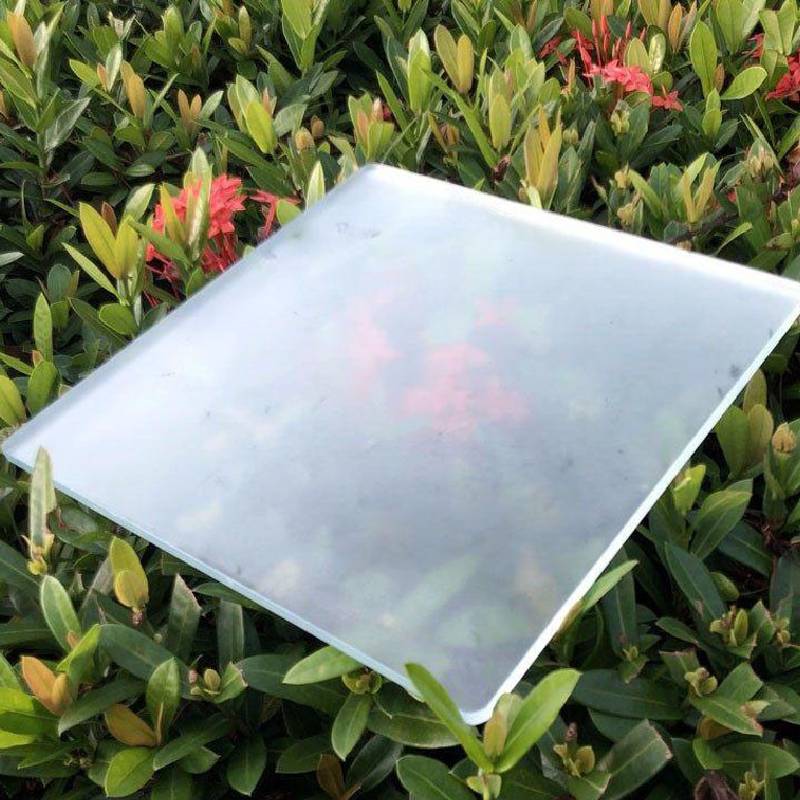Understanding Normal Glass and Tempered Glass A Comprehensive Comparison
Glass is an integral part of our daily lives, serving various functional and aesthetic purposes in architecture, vehicles, and household items. Among the numerous types of glass available today, normal glass (annealed glass) and tempered glass are two of the most commonly used varieties. This article aims to provide a thorough comparison between these two types of glass, focusing on their properties, manufacturing processes, applications, and safety features.
What is Normal Glass?
Normal glass, often referred to as annealed glass, is produced by heating silica and other raw materials to high temperatures to form a molten state. This molten glass is then cooled slowly to room temperature. The slow cooling process allows for a uniform distribution of stress, making the glass relatively easy to cut and shape. Although normal glass is widely used in various applications, it has certain limitations in terms of strength and safety.
Properties of Normal Glass
- Transparency Normal glass is highly transparent, allowing for maximum light transmission.
- Cost-effective It’s generally less expensive than tempered glass, making it a popular choice for various applications.
- Easily fabricated Normal glass can be cut, drilled, and shaped without extensive machinery, making it versatile for manufacturers.
However, there are weaknesses to consider. Normal glass is prone to breaking under impact or temperature fluctuations, as it does not possess any stress-relieving properties.
What is Tempered Glass?
Tempered glass, also known as toughened glass, undergoes a different manufacturing process that significantly enhances its strength and safety characteristics. Once produced similarly to normal glass, tempered glass is subjected to a rapid heating and cooling process. This process creates compressive stresses on the surface while maintaining tensile stresses within the core of the glass, resulting in a product that is much stronger than regular glass.
Properties of Tempered Glass
- Increased Strength Tempered glass is approximately five to six times stronger than normal glass of the same thickness.
- Safety Feature When broken, tempered glass shatters into small, blunt pieces that are less likely to cause injury, unlike the sharp shards produced by normal glass.
- Resistance to Temperature Changes It can withstand higher temperature fluctuations, making it suitable for environments like shower doors and glass facades.
normal glass and tempered glass
Despite its advantages, tempered glass is more expensive than normal glass and can be more challenging to cut or drill after the tempering process, as it risks breaking
.
Applications
Both normal glass and tempered glass have their unique applications based on their physical properties.
Normal Glass Applications
- Windows in non-hazardous environments
- Picture frames
- Shelves
- Furniture applications where safety is not a primary concern
Tempered Glass Applications
- Shower enclosures
- Glass doors and tables
- Facades in high-rise buildings
- Car windows and windshields
- Safety barriers
Safety Features Understanding the Risks
The key differentiator between normal and tempered glass lies in safety. Normal glass is more vulnerable to shattering, which can lead to dangerous injuries. This aspect makes it unsuitable for high-risk areas. Conversely, the robust nature of tempered glass provides extra safety, making it the preferred choice in public buildings and residential spaces where safety regulations are stringent.
Conclusion
In summary, both normal glass and tempered glass play vital roles in construction, design, and functionality. Normal glass offers cost-effective solutions for a variety of non-critical applications, while tempered glass provides strength and safety for more demanding environments. Understanding the differences between these two types of glass can help consumers, architects, and designers make informed choices based on their specific requirements, ensuring both aesthetic appeal and safety in their projects.
 Afrikaans
Afrikaans  Albanian
Albanian  Amharic
Amharic  Arabic
Arabic  Armenian
Armenian  Azerbaijani
Azerbaijani  Basque
Basque  Belarusian
Belarusian  Bengali
Bengali  Bosnian
Bosnian  Bulgarian
Bulgarian  Catalan
Catalan  Cebuano
Cebuano  Corsican
Corsican  Croatian
Croatian  Czech
Czech  Danish
Danish  Dutch
Dutch  English
English  Esperanto
Esperanto  Estonian
Estonian  Finnish
Finnish  French
French  Frisian
Frisian  Galician
Galician  Georgian
Georgian  German
German  Greek
Greek  Gujarati
Gujarati  Haitian Creole
Haitian Creole  hausa
hausa  hawaiian
hawaiian  Hebrew
Hebrew  Hindi
Hindi  Miao
Miao  Hungarian
Hungarian  Icelandic
Icelandic  igbo
igbo  Indonesian
Indonesian  irish
irish  Italian
Italian  Japanese
Japanese  Javanese
Javanese  Kannada
Kannada  kazakh
kazakh  Khmer
Khmer  Rwandese
Rwandese  Korean
Korean  Kurdish
Kurdish  Kyrgyz
Kyrgyz  Lao
Lao  Latin
Latin  Latvian
Latvian  Lithuanian
Lithuanian  Luxembourgish
Luxembourgish  Macedonian
Macedonian  Malgashi
Malgashi  Malay
Malay  Malayalam
Malayalam  Maltese
Maltese  Maori
Maori  Marathi
Marathi  Mongolian
Mongolian  Myanmar
Myanmar  Nepali
Nepali  Norwegian
Norwegian  Norwegian
Norwegian  Occitan
Occitan  Pashto
Pashto  Persian
Persian  Polish
Polish  Portuguese
Portuguese  Punjabi
Punjabi  Romanian
Romanian  Russian
Russian  Samoan
Samoan  Scottish Gaelic
Scottish Gaelic  Serbian
Serbian  Sesotho
Sesotho  Shona
Shona  Sindhi
Sindhi  Sinhala
Sinhala  Slovak
Slovak  Slovenian
Slovenian  Somali
Somali  Spanish
Spanish  Sundanese
Sundanese  Swahili
Swahili  Swedish
Swedish  Tagalog
Tagalog  Tajik
Tajik  Tamil
Tamil  Tatar
Tatar  Telugu
Telugu  Thai
Thai  Turkish
Turkish  Turkmen
Turkmen  Ukrainian
Ukrainian  Urdu
Urdu  Uighur
Uighur  Uzbek
Uzbek  Vietnamese
Vietnamese  Welsh
Welsh  Bantu
Bantu  Yiddish
Yiddish  Yoruba
Yoruba  Zulu
Zulu 

